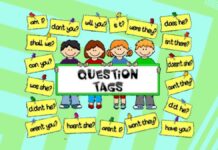Listening in communication refers to actively receiving, interpreting, and understanding the messages conveyed by others. It is a fundamental aspect of effective communication and is crucial in building relationships, resolving conflicts, and promoting understanding. Listening involves hearing the words spoken and paying attention to nonverbal cues, such as body language and tone of voice, to comprehend the intended message fully. It requires concentration, empathy, and an open mind to engage with others and establish meaningful connections.
Listening is a critical communication skill, as it plays a fundamental role in understanding and effectively interacting with others. Without proficient listening skills, it is difficult to truly comprehend the perspectives and emotions of others, hindering the overall communication process. Listening is one of the subjects studied in the language arts and the discipline of conversation analysis.
Active listening, which involves consistently engaging with verbal and non-verbal cues, is essential in establishing meaningful connections and building trust in interpersonal relationships. Research has consistently shown that listening is the key to successful leadership and organisational communication. Listening is a skill that should be valued and cultivated by all individuals, regardless of their role or position. Only through active listening can genuine understanding, collaboration, and meaningful connections be achieved. Therefore, it is clear that listening holds significant importance in various aspects of communication, from interpersonal relationships to leadership and organisational communication.
Listening is essential for teachers and school administrators. By actively listening, educators demonstrate their commitment to understanding and empathising with others, which ultimately enhances the communication experience and fosters a positive educational environment. In this way, they can create a conducive learning environment, establish strong relationships with students and parents, and contribute to the overall success of the school community. It is crucial for educators to continuously develop and enhance their listening skills through professional development opportunities. By doing so, educators can optimise their communication abilities and ensure efficient and effective communication.
Elements of Listening
- Attention —the focused perception of both visual and verbal stimuli
- Hearing —the physiological act of ‘opening the gates to one’s ears’
- Understanding —assigning meaning to the messages received
- Remembering —the storing of meaningful information
Levels of Listening
There are four levels of listening.
- acknowledging
- sympathising
- paraphrasing
- empathising
When considered separately, the levels of listening range from passive to interactive. However, the most effective listeners can project all four levels simultaneously. That means they show they’re paying attention, they show interest, and they convey they are working to understand the speaker’s message.
Active Listening
An active listener pays attention, withholds judgment during the speaker’s turn, and reflects on what’s being said. An active listener is curious about and open to the speaker’s views, wants to understand his or her points, and asks questions to clarify what’s being said. An unbiased listener ensures the questions are neutral, without scepticism or hostility.
Listening means trying to see the problem the way the speaker sees it —not sympathy, which is feeling for him, but empathy, which is experiencing with him. Listening requires actively and imaginatively entering the other fellow’s situation and trying to understand a frame of reference different from your own.
Impediments to Listening
A basic communication loop has a message going from a sender to a receiver and feedback (such as acknowledgement of understanding, e.g., a nod) going from the receiver to the speaker. A lot can get in the way of a message being received, including distraction or fatigue on the part of the listener, the receiver prejudging the speaker’s argument or information, or a lack of context or commonality to be able to understand the message.
Hearing the speaker could also be an impediment, though that’s not always the listener’s fault. Too much jargon on the speaker’s part can also impede the message.
‘Listening’ to Other Cues
When communicating, body language (including cultural cues) and tone of voice can also relay information to the listener so that in-person communication can send more layers of information about the topic than a voice-only means or a text-only method. The receiver has to be able to correctly interpret the nonverbal signs to avoid subtext misunderstandings.
Keys to Effective Listening
- Maintain eye contact with the speaker if possible.
- Pay attention and listen for ideas.
- Find areas of interest.
- Judge content, not delivery.
- Don’t interrupt, and be patient.
- Hold back your points or counterpoints.
- Resist distractions.
- Pay attention to nonverbal information.
- Keep your mind open, and be flexible.
- Ask questions during pauses and give feedback.
- Listen with empathy to try and see the speaker’s viewpoint.
- Anticipate, summarise, weigh the evidence, and look between the lines.






























